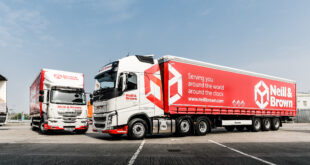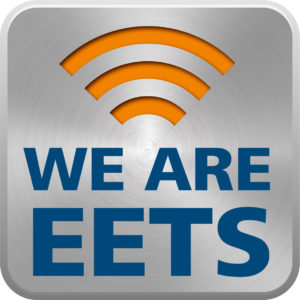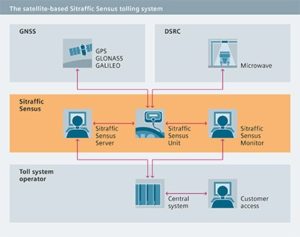2018 is the year of that long-awaited ‘one toll box for all Europe’. In two earlier blogs I put forward that still there are quite a few complications before we ultimately get EETS-compliant toll boxes. Right now (May 2018), for instance, only Belgium, Austria, France, Spain, Portugal, Italy and the A4 in Poland are EETS-ready. So it is only in these countries that tolls may be paid using an interoperable EETS-toll box. In addition there are wide differences between individual providers of EETS-compliant toll boxes, ranging from OBUs marketed by non-EETS-certified suppliers to OBUs that do not conform to (future) technical requirements and specifications. Service providers are clamouring their ‘OBU for Europe’ to be the best. However, will all of them live up to their promises? We will, actually. This accounts for our promotional ‘We do what others promise to do’ campaign.
Let’s not beat about the bush: harmonization of toll payments implies a huge opportunity for service providers like DKV Euro Service. Transport companies wish to cut costs and laborious paperwork and to put an end to the present diversity of toll boxes required to be installed in their cabins right now. Therefore they will transfer to an EETS-certified provider of uniform toll boxes fit for use all over Europe. Each service provider obviously wishes to win these companies over to its side. By now, a significant factor in this race would seem to be early introduction of this box; instant delivery of ‘a’ box turning out to be more important than well-considered analysis of the exact toll solution. What is required from a technical viewpoint, now and in the future? In what way will the new toll box contribute to an optimised cost structure and promote the customer’s interest? And how will the new toll box provide for future needs like reporting and analysis?
“How could an interoperable OBU for all Europe be functioning spotlessly both now and in the future, as long as this box is based on outdated technology originating in a past in which Plug & Play did not even exist?”
Personally speaking, I can only be surprised at this race. We are service providers, not toll box pushers. For this reason, we, at DKV Euro Service have opted for an altogether new technological approach. One that does not involve working on currently existing foundations, but a fully new design from the outset, based on the latest technologies and techniques. The first toll box dates back to the nineteen nineties after all; an era in without iPhones and IPads, with green computer screens and with fax machines being important communication channels. So how could an interoperable OBU for all Europe possibly function today and in the future as long as this box is based on outdated technology that finds its origins in a time in which Plug & Play did not exist yet? We have chosen for the Sitraffic-Sensus technology by Siemens. This technology obviously supports both GNSS and DSRC and already now enables us to live up to several future technical challenges, like those posed by the Italian toll system. In addition, this technology stands out for its uncomplicated updates as opposed to intricate upgrades. Over-the-air, so with continuous access to the latest version, without delays or interruptions. This makes it possible for users to add new countries to the OBU at just one push of the button. Likewise, this technology houses countless possibilities for making the many fleet records and data collected en route transparent in your interest, and in secure conditions. This is done by way of reports & analyses that naturally account for the new GDPR/AVG-legislation on data security and data privacy.
“The race for the fastest introduction is one we did not win. But we never set out to do so. We are service providers, not toll box pushers.”
So, yes, we at DKV Euro Service have been working hard towards realising a pan-European toll box that actually lives up to both current and future standards. This must be opposed to the starting-point of speedy introduction of a toll box that is fit, admittedly, for short-term use, but would require to be exchanged for a box based on modern technology in the longer run. This has prevented us from winning the early-introduction race. Fortunately this had never been our purpose. Also for this introduction, namely, we preferred to adhere to our five essential business principles: compliance, continuity, cost control, flexibility and operational excellence. Consequently, with our DKV BOX EUROPE we wish to contribute to the continuity and compliance of your, our customer’s, business operations. I am truly confident of our success; the result of just doing what others promise to do.
 DKV BeNeLux You drive, we care
DKV BeNeLux You drive, we care


